Learn how to make authentic curd or yogurt rice, South Indian style by following this easy recipe. Also known as Thayir Sadam or Dahi Bhaat, it's a delicious dish made with yogurt and rice that's easy to digest. The tempering or tadka elevates the flavors. Make it in just 10 minutes if you have cooked rice ready!
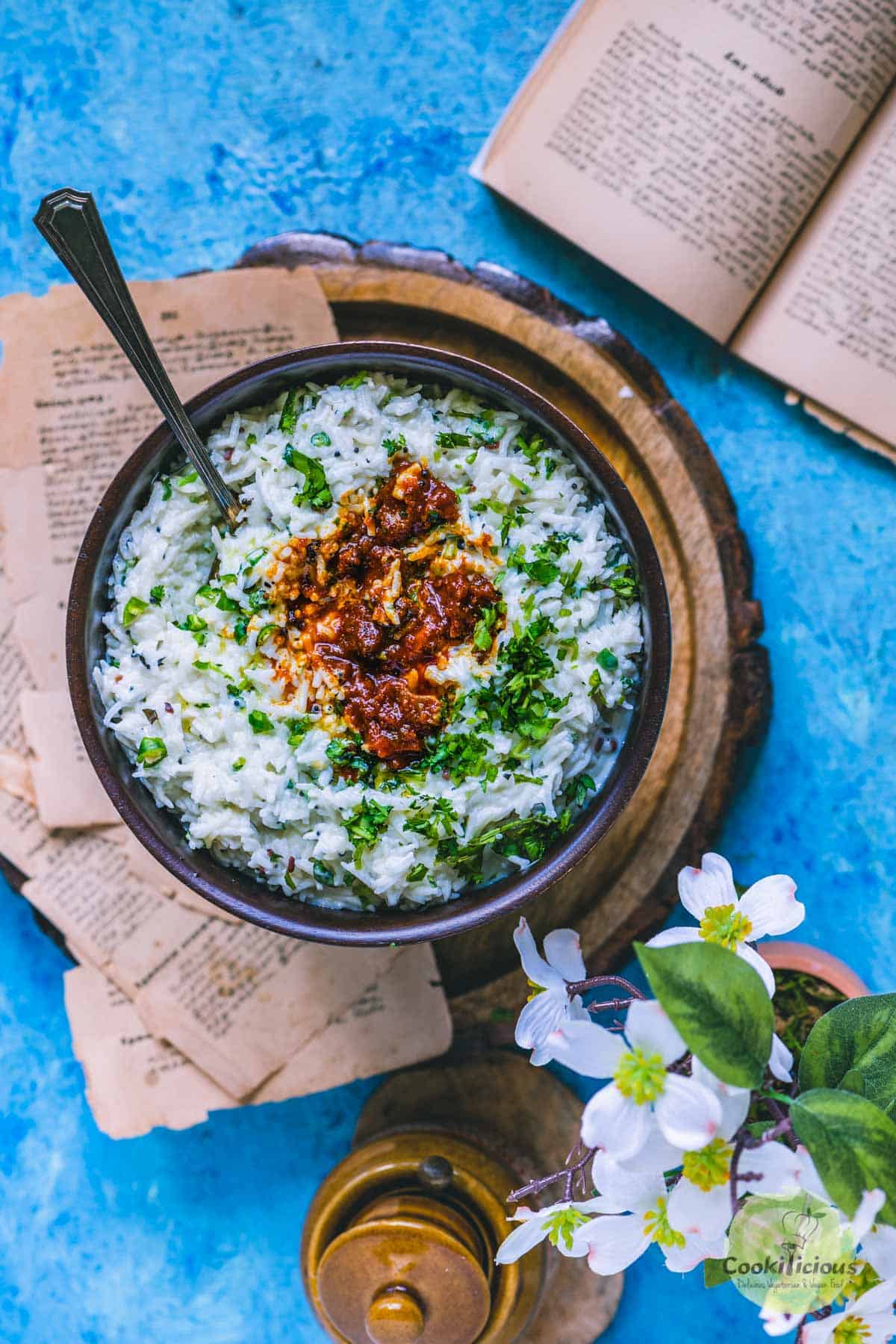
Jump to:
What is curd or yogurt rice
Curd (Indian yogurt) Rice is one of the most popular staple foods of South Indian (Kerala, Tamil Nadu, Karnataka, Andhra Pradesh, and more) cuisine. But today it is but is no more restricted to just the South. It's made across many homes around the world with its own set of variations. It is a simple delicious meal made with rice and yogurt with or without a tempering on top.
It is also made in other parts of India and it has various names - Thayir (curd) Sadam (rice) in Tamil, Daddojanam in Andhra Pradesh, and Dahi (curd) bhaath/chawal (rice) in Hindi. The consistency of yogurt rice is like a loose porridge or oatmeal. The gains are not separate like one would want for biryani or pulao. It's more like one homogenous mixture.
It's a comfort food that's easy and light on the stomach which is why it is safe for infants and toddlers (normally given as first food) and the elderly people because it's easy for them to chew and swallow. Just like khichdi or rajma chawal, bhaat with yogurt is like comfort food for us. While we Indians always knew the benefits of yogurt rice, Padma Lakshmi was one of those who made it cool and famous in the west!
South Indian Rice Recipes 🎥
Tempered or Untempered
There are primarily two versions of it. One is when plain curd or yogurt is mixed with chawal and a pinch of salt is added to balance the flavors. The second is when an additional tempering of spices is added to this plain version to give it a crunch and that extra flavor. Both these versions are equally popular.
My parents and grandparents like most Indian families would have plain curd rice towards the end of the meal. The reason why South Indians eat curd or yogurt is that it helps counteract the spice and heat from the other dishes consumed before like sambhar and rasam. Ending it with a bowl of untempered dahi chawal or buttermilk balances the meal.
Whereas when the yogurt rice is tempered, it gives a smoky and crunchy finish to the dish. Tempered Thayir sadam is made on special occasions like weddings, or when offered as prasadam in temples and during festivals like Janmashtami. Note - To make temple-style thayir sadam, use freshly cooked rice and not leftovers.
Trichy memories
Being a Tamil Brahmin, I have been a fan of thayir sadam all my life! I feel my grandmom made the best Thayir sadam - slightly runny, salty, and refreshing, paired with the tangiest homemade mango pickle! During our summer vacations, we would always visit my mom's maternal house in Trichy and stay there for nearly a month. We would look forward to this trip all year.
I would accompany my aunt (mom's younger sister) who was a teacher, to her school. My Pati (granny) would pack Thayir sadam with homemade mango pickle and roasted papad. Sitting with her under the shade of a tree, listening to a story as she fed me curd rice with South Indian-style aam ka achaar is one of the most precious moments that I have shared with my favorite aunt.
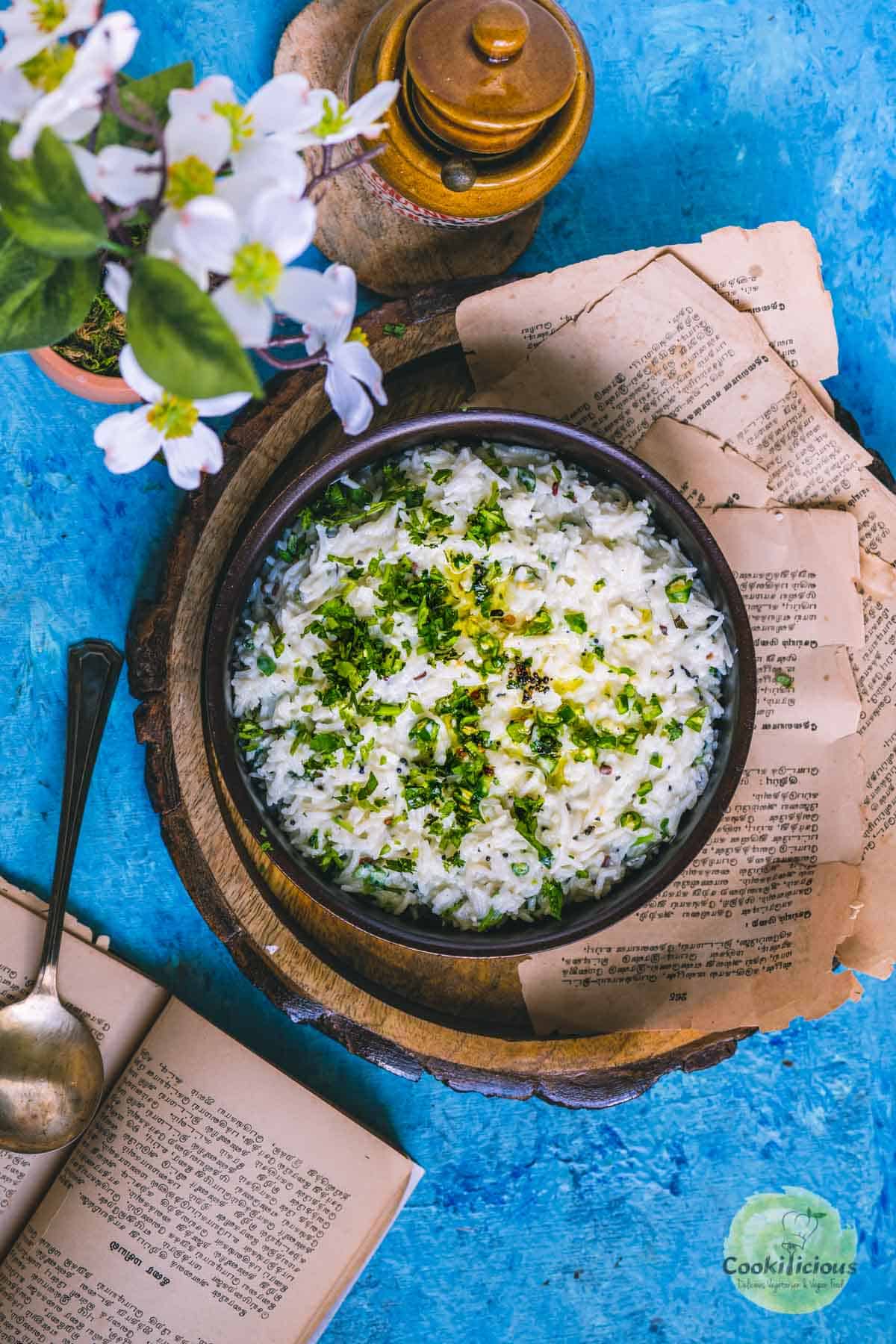
Is it healthy
Yes, curd or yogurt rice is very healthy. Consuming dahi bhaat regularly aids in digestion because it contains probiotics, antioxidants, and beneficial fats. It also helps cool down the body, especially in summer. Ending a meal with a small portion of dahi bhaath every day can work wonders for you. It's generally considered healthy, and safe to consume when you have stomach upset, acidity, or digestion problems. It also helps with weight loss and induces sleep. It also helps bulk up stools and relieve diarrhea as well.
In fact, if you suffer from lactose intolerance (can't consume dairy) you can still get the benefits of calcium and vitamins from consuming curd if your condition is not too severe. Lactose which is a protein present in milk is converted into lactic acid in curd which makes it easy to digest. It truly is a comforting, satiating, and refreshing dish that can be consumed daily.
Why make this
Indian-style yogurt rice is one of the most preferred meals to pack for lunch, especially during summer.
- Quick, and simple South Indian dish
- Great way to use leftover rice
- Safe to eat for toddlers (with reduced spice) as well as the elderly
- Is a Easy Indian vegetarian rice recipe
- Can easily be made vegan and gluten-free
- Ingredients are easily available in the Indian pantry
- Packed with flavors
- Calcium, vitamins, and carbs make it a complete meal
- Can be made ahead of time
- Light and healthy meal
Ingredients needed 🧾
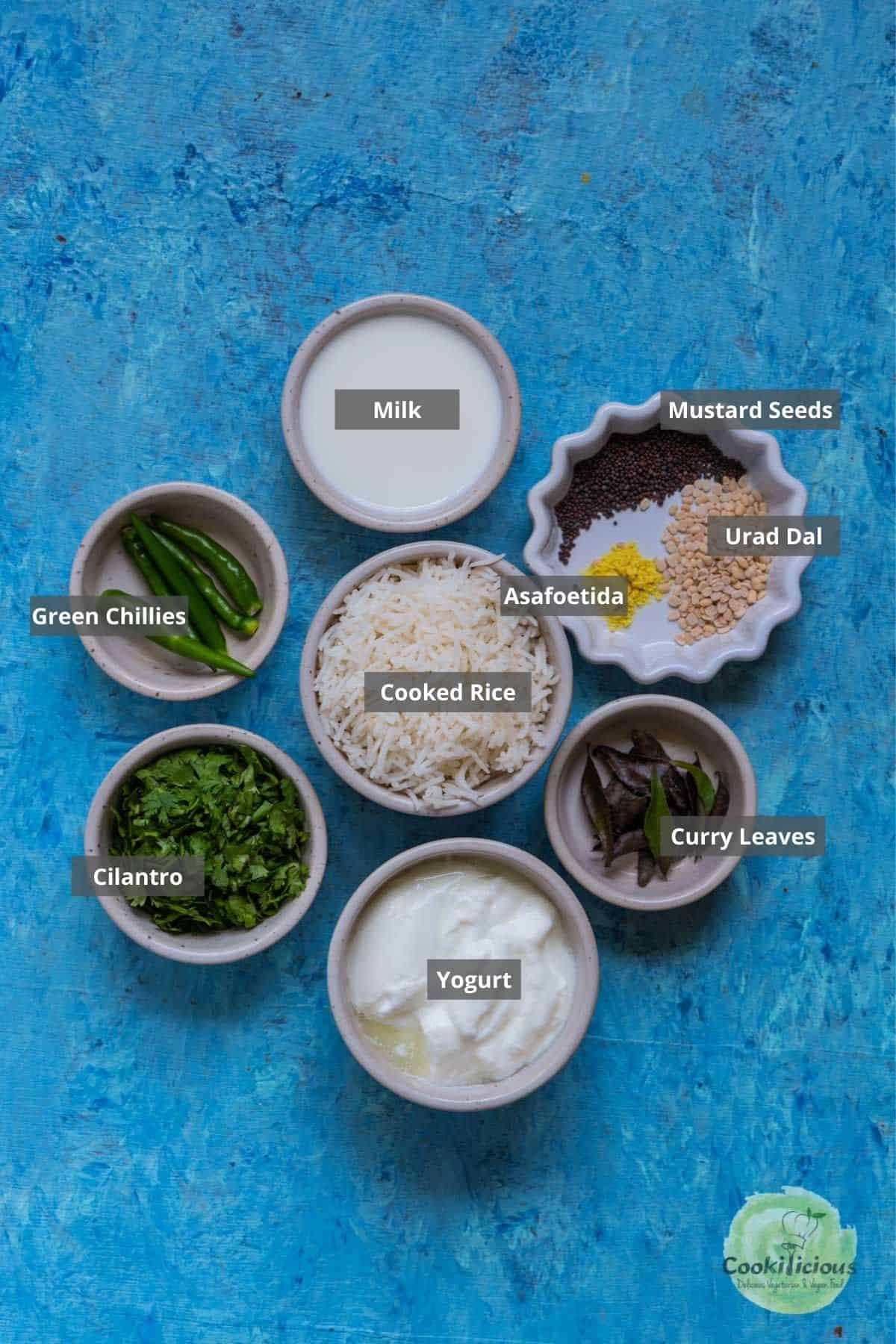
Want to save this recipe?
Curd, Dahi, or yogurt - Use homemade plain and unsweetened curd for this recipe. You can also use the Desi Dahi brand that you get at Indian grocery stores. Homemade Indian curd is the best for this recipe. It should be fresh and not taste sour. You can also use regular or Greek yogurt to make this dish. Just thin it down a bit by adding little water.
Indians love using yogurt in their recipes. Here are some dishes that you can try with curd - Dahi sandwich, Beets Peanut Raita, Burani Boondi Raita, Himachali Chana Madra, Avial, Koshimbir, and Dahi Vada.
Buttermilk can also be used. Read my notes below to see what to use if you are vegan. Note - While both Curd and Yogurt contain probiotic bacteria, the quantity of bacteria in Yogurt is higher as compared to Curd. You can use either of them in this recipe. The curd or yogurt can be made using full-fat milk or you can use fat-free or 2%.
Rice - Any variety will work in this dahi bhaat recipe. Use Sona Masoori, Surti Kolam, Basmati, or even Jasmine rice. You can either cook it fresh using a pressure cooker or Instant pot or use leftovers in this recipe. In fact, in our homes, we always use leftovers. If cooking it fresh, then overcook it a bit.
Milk - Not many are aware that we also add whole milk to our yogurt rice. Milk adds flavor, prevents it from turning too sour or tangy, and helps it last longer. If you making this dish for travel, then don't skip adding milk.
Spices used - Green chilies (for the spice), black mustard seeds (they have the strongest flavor and aroma of all mustard seeds), urad dal (gives it a nutty flavor and crunch), fresh curry leaves (they bring in unique citrus and nutty aroma), cilantro or coriander leaves, and asafoetida (aids digestion and prevents flatulence), are some other basic ingredients that will add so much flavor to this easy yogurt rice recipe.
All these spices can very easily be found at Indian grocery stores or on Amazon. Some also like to add cashews, pomegranate seeds or arils, carrots, cucumber, coconut, and/or onions to this rice and yogurt dish. But I usually make it without these ingredients.
Oil for tadka - You can use any vegetable oil, coconut oil, or ghee for tempering.
How to make it 🔪

Every household has its own way of making it. I follow my Pati's recipe which is Tamil-style and it's the best! Simple and delicious! It's also very similar to the hotel-style
- The first step is to cook rice. You can either cook it fresh or use leftovers. Then transfer it (at room temperature) to a mixing bowl. Mash it slightly.
- Add yogurt to the bowl. You may or may not whisk it before adding it. Then pour milk into the bowl and add salt. Mix. Add vegetables at this point if adding. Chef Tip - Instead of a spoon, use your clean hands to mix the curd with the rice till it coats well. You can also smash it slightly as you mix.
- Heat oil in a tadka pan (some also like to use ghee), temper mustard seeds, and urad dal and asafoetida. Then add finely chopped cilantro, green chillies, and curry leaves. Fry for 30 seconds and then pour this tadka over the prepared yogurt rice.
- Mix it all together. We mix it by hand as that makes a lump-free, homogenous mixture. But if you're not comfortable, use a spoon. Then store it in the fridge till it's time to serve.
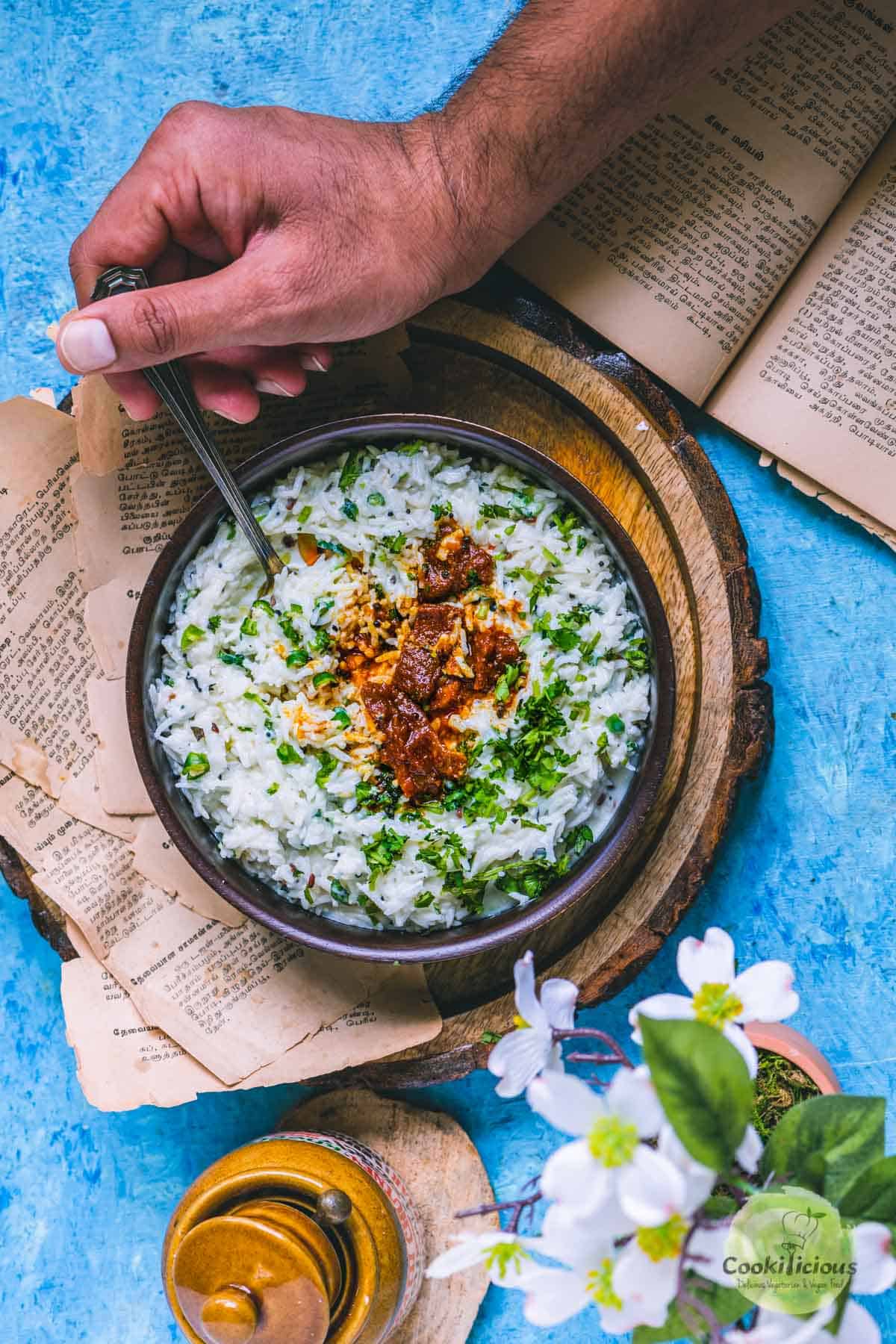
Serving suggestions 🍽
Creamy Dahi Bhaat tastes best when served cold or at room temperature. Do not heat or warm it as it can break down the curd, destroy the friendly bacteria, and affect the texture. In a South Indian household, Thayir sadam is usually the last thing we eat at lunch or dinner. It helps with digestion. The best side dish for curd rice is any kind of Indian pickle when finishing a meal.
However, we also eat this Indian yogurt rice as a meal. If doing so, I like to make it a bit spicy by adding more green chillies. KR likes to have some fried mor milagai on the side. He swears by this combination. Do try it. Other best side dishes to serve with curd rice are sambhar, rasam, or dal along with Potato Fry, and something crunchy like appalam, or poppadum/chips/kara boondi. We go for thayir sadam if we have had a heavy meal before or have come home after a vacation.
In fact, this Indian rice and yogurt recipe is also great for road trips. Pack it in airtight containers and take it with you on the go! We would always carry it with us on long train journeys along with masala idli. Also serve it for breakfast, lunch, dinner, or brunch. In fact, if you have had a spicy meal, thayir sadam is the best way to balance the palate. It helps in digestion and also reduces acidity. Spicy curd rice is one of our favorite go-to meals!
Top recipe tips 💭
Since this dish is often served chilled. You can use chilled yogurt, and milk straight from the fridge. Don't skip the tempering. It adds so much flavor. Even if you are cooking rice fresh, overcook it a bit and cool it down completely before adding chilled yogurt and milk. If you don't then it will kill the live cultures in the curd and cause it to split.
If lentils are hard, I suggest you soak the urad dal in water for 10 minutes before adding them to the tadka. Cashews can be used instead of urad dal. Use evaporated milk instead of regular milk for a more creamy texture. If you want a quick fix, enjoy it without the tadka. It will taste plain but still delicious enough! The ratio of milk will depend on how sour the curd is.
You can also add milk to adjust the consistency. Skip milk and add water instead if you want. Feel free to add more veggies to this Dahi Bhat like grated carrots, onions or shallots, ginger, and cucumbers. Some also add coconut, bell pepper, pomegranate seeds, raw mango, and other fruits to the mixture. I have shared a basic thayir sadam recipe, you can customize it based on your preference.
Recipe FAQs 📖
Any short or long-grain variety will work in this dahi bhat recipe. Use Sona Masoori, Surti Kolam, Basmati, Ambe Mor, or even Jasmine rice. The gains should not separate when cooked as one would want for biryani or pulao. If they are, you can mash them lightly. The texture is more like one homogenous mixture.
You can either cook it fresh or use leftover cooked rice in this recipe. In fact, in our homes, we always use leftovers because the starches in them become more resistant and the flavors will stick to the grains better than when they're freshly cooked. You can also use the leftover rice from takeout. If cooking it fresh, then overcook it a bit. You can also cook it with milk and water to make the dish creamier. So the next time you end up with overcooked or mushy rice, you know what to make.
If you want to experiment, make this recipe using brown rice, semiya, rolled oats, millets like quinoa, or even cauliflower rice if you are on a keto diet. I am yet to try these but I know for sure that they will alter the taste.
You can definitely make dahi chawal in advance and store it in the fridge. Before serving, to get the moistness, add some more yogurt, milk, or water to loosen it. The tadka can be added just before serving or you can store it with the tadka done. You can either then serve it chilled or at room temperature. Do not heat it. I would not recommend freezing the yogurt rice as can split after thawing.
For those who are vegan, you can definitely make Dahi bhaat dairy-free. Use any unsweetened plain vegan almond milk yogurt and oat or cashew milk.
I have made it using these ingredients and it tastes good. You can also use silken tofu. Blend it with soy milk, lemon juice, and salt. use this as a curd substitute. Do not skip the tempering part as it gives it a nice earthy flavor. In fact, I have shared the vegan curd rice recipe in my cookbook.
Skip asafoetida/hing or use gluten-free asafoetida or onion powder to make this recipe gluten-free.
You can very well make it in the Instant Pot. Add oil and do the tadka in saute mode. Then add the rinsed rice and cook it in rice or manual mode for 5 minutes. Release pressure manually, turn off the Instant Pot, and let it cool down. Transfer to a bowl. Then add curd, milk, salt, and cilantro. Mix it all well together and store it in the fridge till it's needed. You can also cook the rice separately in the Instant pot, do the tadka separately, and add it along with the curd at the end.
South Indian rice recipes
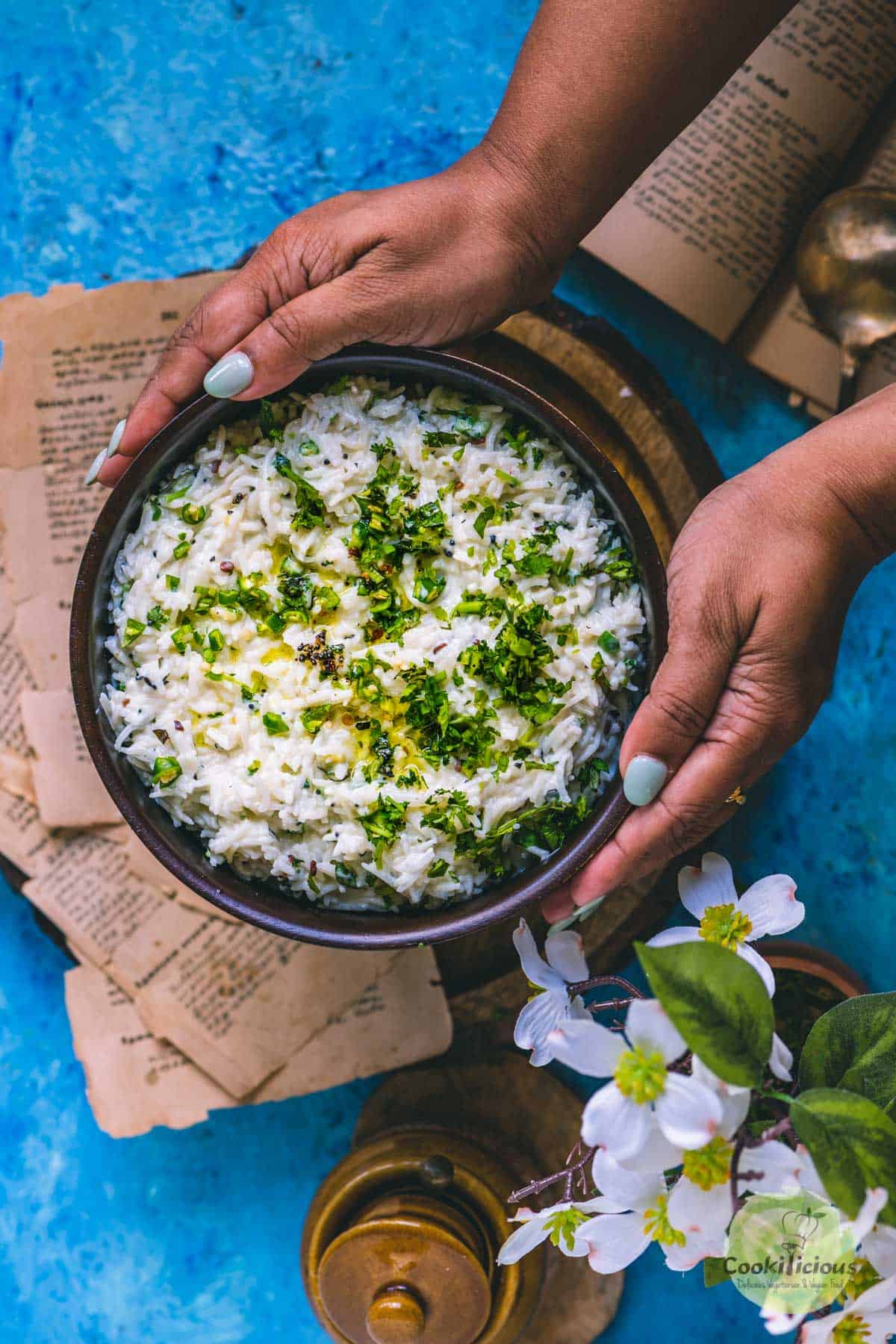
I have shared an Instagram reel video on how to make yogurt rice. You can check it out.
Did you try this recipe? Please let me know how it turned out by leaving a comment below or sharing a picture on Instagram @cookilicious with the hashtag #cookiliciousveg. I love hearing your feedback!
Like this recipe? Please show your love by leaving a 5-star 🌟🌟🌟🌟🌟rating below!
You can also follow me on Facebook, Twitter, Instagram, and Pinterest to see more delicious vegetarian and vegan recipes and what I’m getting up to.
Recipe 📖
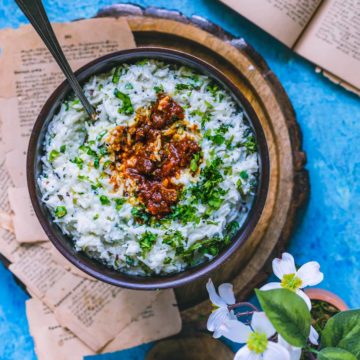
Curd Rice Recipe | Thayir Sadam | Dahi Bhaat
Equipment
Ingredients
- 2 cups cooked rice
- 1 cup curd or yogurt
- ½ cup milk
- 3 green chillies minced
- ¼ teaspoon asafoetida
- ¼ cup cilantro
- Salt
- 1 teaspoon oil
- 2 teaspoon mustard seeds
- 1 tablespoon urad dal
Instructions
- The first step is to cook rice. You can either cook it fresh or use leftover rice. Then transfer the lukewarm rice to a mixing bowl. Mash it slightly.
- Add yogurt to the bowl. You may or may not whisk it before adding. Then pour milk into the bowl and add salt.
- Heat oil in a tadka pan, temper mustard seeds, and urad dal and asafoetida. Then add cilantro, green chillies and curry leaves. Fry for 30 seconds and then pour this tadka over the rice.
- Mix it all together. We mix it by hand as that makes a lump-free, homogenous mixture. But if you're not comfortable, use a spoon. Then store it in the fridge till its time to serve.
- Serve chilled with pickle, and papad.

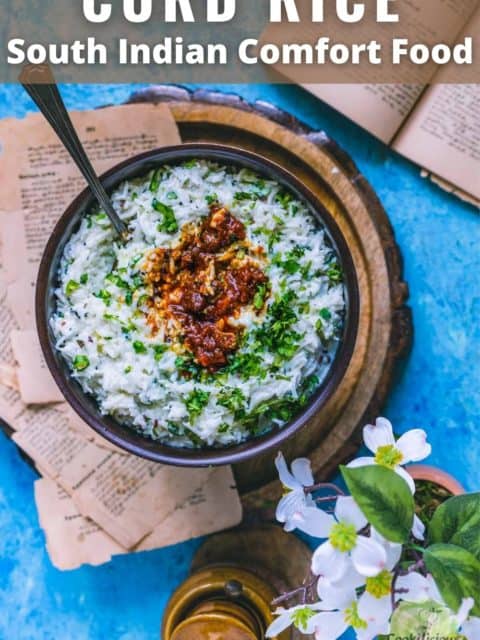
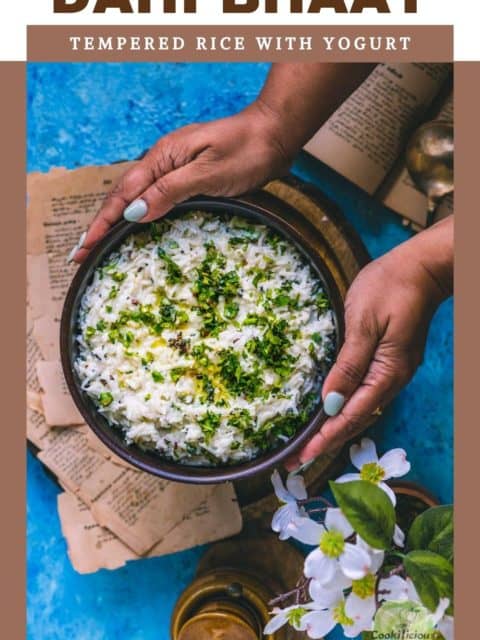
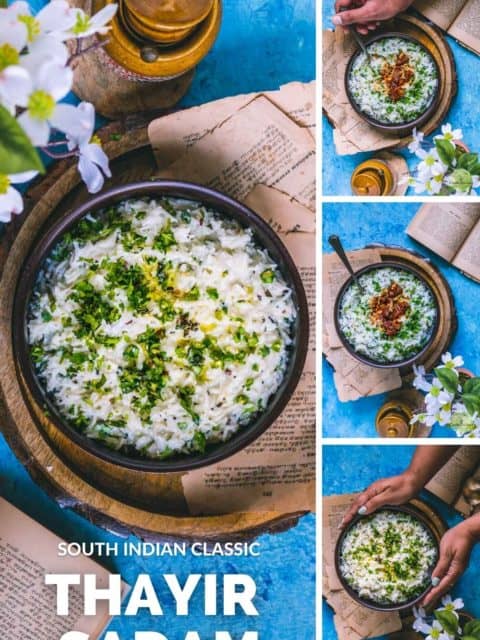
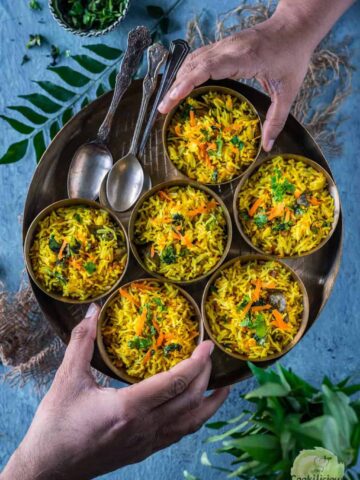
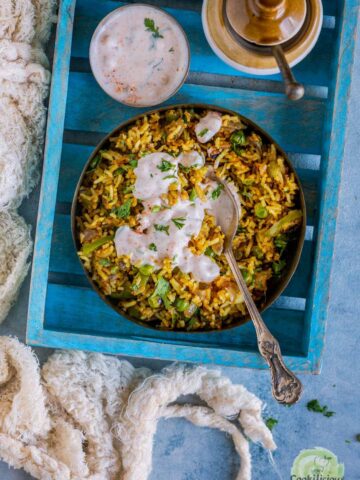
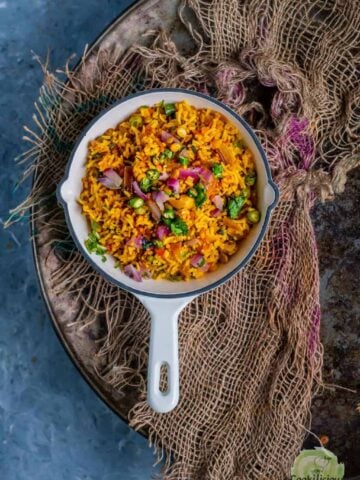
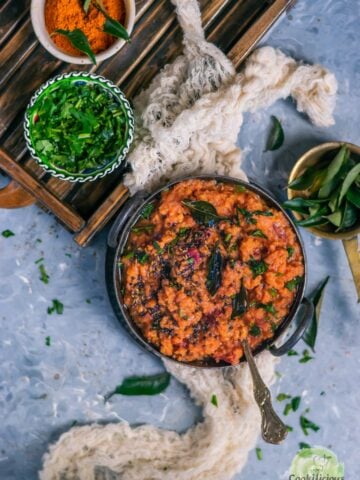
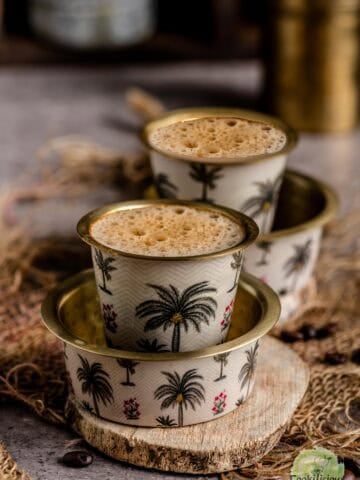
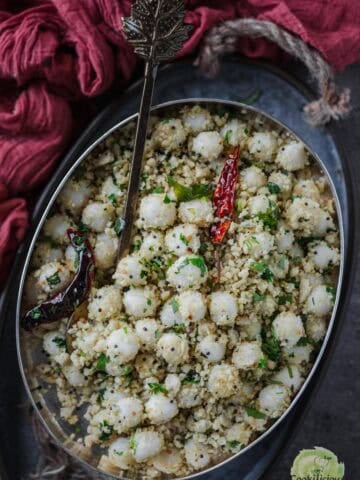
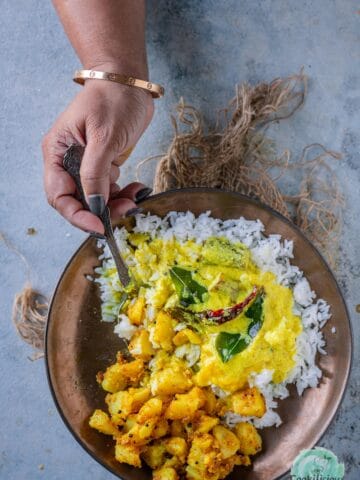

Leave a Reply